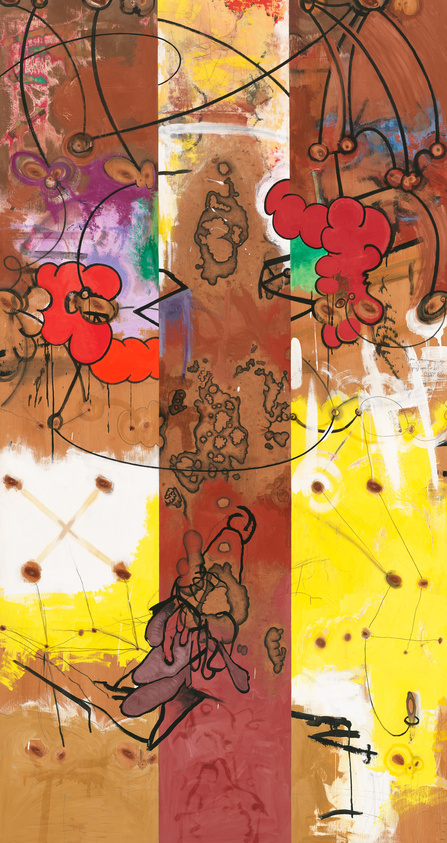Between 1982 and 1987, Carroll Dunham generally used wood veneer as a painting surface, exploiting the pattern of the grain in composing each image. In Pine Gap (so called because two vertical panels of pine veneer are separated by a central one of elm), the wood’s knots are highlighted, while other linear incidents on the veneer become the basis of rough-edged forms whose color-saturated edges resemble the contours in solarized photographs. These forms, though nearly figurative, stop short of producing wholly legible, narrative representations. The outlines of intestinal shapes and of male genitalia, readily discernible, float freely in a high-colored field also punctuated with sweeping black, lines that suggest trajectories of objects in motion.
Not on view
Date
1985–1986
Classification
Paintings
Medium
Casein, carbon pencil, colored and graphite pencil, and dry pigment on wood veneers mounted on plastic
Dimensions
Overall: 76 15/16 × 41in. (195.4 × 104.1 cm)
Accession number
86.36
Credit line
Whitney Museum of American Art, New York; purchase, with funds from The Mnuchin Foundation
Rights and reproductions
Courtesy the artist and Gladstone Gallery, New York and Brussels

